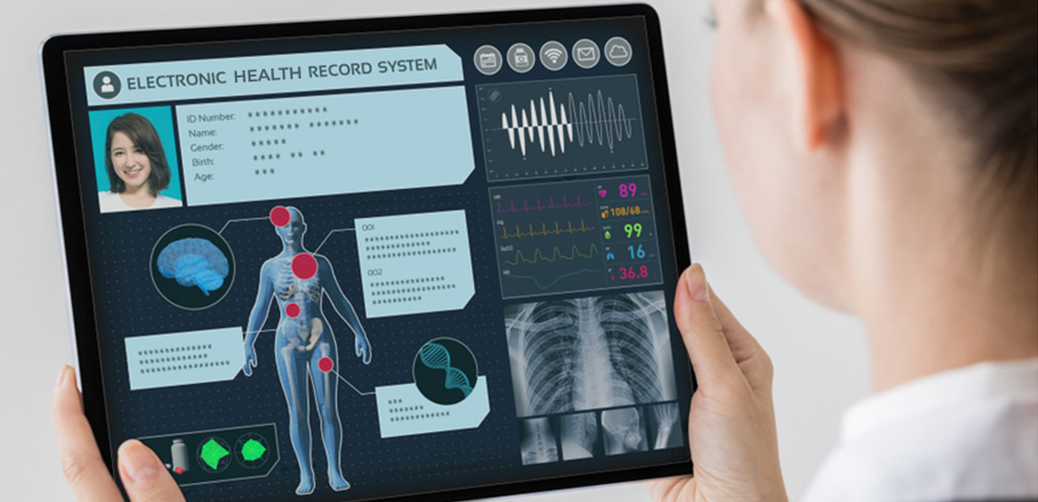Like several other sectors, the healthcare sector has warmed up to the deployment of online and digital technologies. In the last decade, the healthcare sector professionals, as well as doctors, have become accustomed to using such technologies and tools to enhance services and operational efficiencies. It is not only about using cutting edge apparatus and computer-guided procedures to treat patients. Of late, the medical fraternity has embraced mobile apps, and the switchover to EHR has also picked up the pace. With time, awareness about Electronic health records is growing. The medical community is waking up to its potential and benefits.
What is EHR and why switching over to it is necessary?
EHR refers to the process of storing medical information of patients and history in retrievable digital formats. It may include treatment details, medications, health history of patients under a service provider, and more.
Compared to the traditional document-based storage, EHR is way more convenient and easier to deal with. The benefits of using EHR are:
- In EHR software and systems, information gets stored digitally. It is hard to tamper with that information.
- It is faster to retrieve EHR data than paper-based records.
- It does not suffer from legibility issues, which is the case with a paper-based process.
- Paper-based health data can be lost, damaged, and stolen, but that is not the case with EHR.
- Modern EHR tools come with advanced features like encryption, and there are provisions for cloud back-up too. So, it is inherently more secure.
- Using EHR makes things convenient for all parties involved. It helps in saving time and enhancing operational efficacy.
The slow but steady adoption of the EHR
The evolution of digital technology in the medical sector has been gradual and somewhat slow. A few decades back, paper-based clinical records were what everyone relied on. Then arrived the first wave of technology and photocopies and printouts became popular. However, coping with a gargantuan and ever-growing amount of paper-based data proved to be tedious.
The wave of paperless solutions caught up with the sector late, and there was widespread skepticism in the early days of adoption. Cut back to a decade and a few more years, the adoption of EHR was not fast. A section of lawmakers and medical community stalwarts did bat for technological reforms in the healthcare sector though.
Sometimes, it takes a devastating event for the mass to realize the need for change and embrace newer things. It was the mess unleashed by Hurricane Katrina that made the skeptics see reason. It ravaged the health records of several thousand patients, prompting an alarm in the medical sector. That incident served as a turning point. The medical community and the lawmakers reacted, saying it is high time to deploy EHR on a massive scale.
The Federal incentive programs were launched in 2009 to promote the deployment of EHR on a large scale. The clinicians and hospitals received approximately $37 billion through incentive payments to ensure the technology is implemented. Over the decade, the deployment of EHR has grown substantially.
The growth and hurdles of EHR
While the medical sector has realized the potential and advantages of using EHR, it is not always a rosy ride! There are numerous types of healthcare service providers, and their scale of operation also varies a lot. The reality is uniform, and proper deployment of EHR amidst thousands of diverse healthcare and medical facilities is not a breeze. The small and mid-sized clinics and healthcare setups do not fare so well when it comes to the deployment of EHR technology. The available data shows only a section of Primary care practices deploys EHR practices in the desired way.

Research carried out by EvidenceNOW shows a majority of small and midsized clinical facilities use EHRs. However, many such tools used by these entities are not ideal for quality improvement. These entities, owing to their limitation of resources and lack of funding, find the switchover and learning curve steeper than the larger facilities. They require intensive and on-going support to overcome the hurdles.
The small clinics and healthcare entities are not always aware of resources they can contact for assistance and deployment of EHR. The clinical data warehouses, Health information exchanges are there, but availability is still not easy or uniform.
A section of the doctors also did not warm up to EHR deployment. Some of them still grudge that it makes them spend more time on computers checking and updating records than they spend interacting with the patients.
What the future of EHR looks like?
Since 2009, the US govt. has focused on deploying digital technology to boost the healthcare sector. EHR is an integral part of it. The govt. has invested a lot after deploying EHR and making digital technology an integral part of the healthcare system.
The good thing is after 2010; the medical community shed off its earlier sluggish stance in deploying digital technology and EHR. The US Department of Health and Human Services data shows by 2017, almost 96% of the hospitals and over 85% of physicians’ offices in the country were equipped with EHR access systems. Even the level of awareness in the patients on EHR is growing with time. A survey conducted by the San Francisco based Henry J. Kaiser Family Foundation in 2019 showed 45% of US citizens think positively about the impact of EHR.
There have been initial issues, and some unexpected adverse developments have taken place too. Problems arose owing to many factors. These included a lack of technological skills in a section of clinical staff, different vendors making distinct systems with unique data formatting protocols, and a resultant lack of compatibility. These led to switchover hiccups and slowed syncing between different clinical entities.
However, the EHR system is also evolving with time, and the loopholes of the first generation are being identified to make the upcoming versions better and more foolproof. Rather than using systems that rely on local storage, the clinics and medical personnel now prefer cloud-based services. In the near future, evolving technologies like AI will be integrated with EHR, and prospects of deploying Blockchain services are also being experimented with.
At SoftGrid Computer Indore, we possess technical expertise and skills to build a dedicated Telemedicine Solution for an individual or a healthcare organization. Our team of experienced professionals can help you in designing Customized Healthcare Softwares integrated with third-party systems and telemedicine services to gain an edge over your competitors.
For more information around electronic health records, you can follow our future and past published blogs.

 Web and Full Stack
Web and Full Stack CMS and Frameworks
CMS and Frameworks Online Marketing
Online Marketing Cloud Services
Cloud Services ECommerce
ECommerce Mobile
Mobile



